-
About
- About Listly
- Community & Support
- Howto
- Chrome Extension
- Bookmarklet
- WordPress Plugin
- Listly Premium
- Privacy
- Terms
- DMCA Copyright
- © 2010-2025 Boomy Labs


 Alpesh Patel
Alpesh Patel
Listly by Alpesh Patel
Hi-Tech extends mechanical engineering design services including product design, development, drafting, reverse engineering, rapid prototyping, value engineering & PLM services.
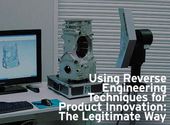
The goal of utilizing RE should be to identify flaws in your version of the product design and figuring out ways to eliminate the errors and bring out a flawless product eventually. Nikunj Patel | Hi-Tech CADD Services The utilization of reverse engineering in manufacturing industries is long been in practice despite several criticisms on issues like copyrights, patent infringement and piracy.
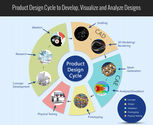
High precision CAD models, have become the industry standard for communicating design parameters and manufacturing specifications. CAD is however not restricted to CAD modeling, it supports CAE process and extends through the entire process that spans across the stages of concept generation, design and validation within a product’s design cycle.
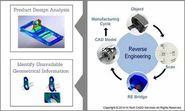
The concept of reverse engineering is to discover the technological principles of the devices through analysis and of its structure, function and operation. The primary process of reverse engineering involves disassembling devices to extract details that were missed, remained incomplete or replace unavailable information.



Finite Element Analysis (FEA) is the method of evaluating complex stress problems and is often used in parallel with stress analysis and structural analysis. With this advanced analysis process, experts can intricately identify the high stress regions and detect loopholes in the design.

Rapid Prototyping is aggressively transforming manufacturing industries, posing an intensive threat to conventional approaches. Despite a costly investment, manufacturers continue to adopt rapid prototyping as a means to evaluate the product design effectively. Although, the first application of rapid prototyping technology dates back to the early 90’s, the usage significantly gained momentum since the evolvement of 3D printing.
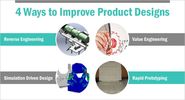
Developing high-performance and cost-effective products in a stiff market condition is one of the biggest challenges manufacturers face today. Incorporating innovative strategies in the product development cycle has become inevitable, in order to achieve organizational objectives that predominantly include shortening the development time and producing products that possess competitive edge in the market.

One of the prominent challenges that product designers face, is not having the ability to make clients or in-house management staff to realize how the product will look and feel actually. Despite the possible advancements in 3D CAD technologies, explaining design aspects through digital models always ends up with “can you prove-it” question.

Assembly drawings are integral for manufacturing units, and requires a healthy amount of time for developing a 3D model with all the required mating features. Modern CAD tools are however far more powerful today, helping designers to quickly develop complex geometries using an array of useful tools.
It’s not surprising to see drawings developed using 3D models today, as it is easy to draw in 3D without much knowledge about the actual projections of the drawing in different views. Today, most organizations are looking to transform their 2D capabilities to 3D because of number of advantages it offers. 3D modeling allows better visualization of the product design and helps in integrating with simulation and virtual prototyping.

Developing CAD model for large and complex assemblies require a lot of planning and organization. It is most common for designers to deal with large assemblies in many industries, consuming large CPU power and making the modeling process time consuming. In order to simplify large assembly modeling, designers utilize top down modeling approach, which involves creating the assembly design at the highest level possible and individual parts and sub assemblies are defined with the context of the entire assembly.

Product development and manufacturing is in a stage of major transformation across the globe. With a message from the market to speed up the development process, manufacturers are consistently looking to improvise their manufacturing processes and develop technological capabilities to shorten the development cycle.
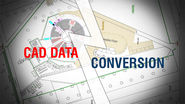
As a manufacturing firm or an engineering design consultancy, requirement for CAD data in different formats is very much a common practice. The CAD file is expected to travel across all the departments in-house and also to vendors and clients.Since the entire manufacturing process is dependent on the CAD model being designed, the design information should remain intact everywhere.

Reverse engineering not only helps in restoring obsolete parts, but also helps in improving the design of the part and its strength and performance. Combining both the reverse engineering and rapid prototyping technology can help in restoring classic cars to their original and in fact better shape, so that the feeling of vintage car driving remains joyful.
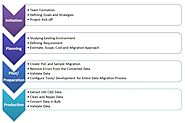
Companies globally, require multiple CAD systems to accomplish their product development objectives. The use of multiple CAD platforms could be at a departmental level within the organization or it could be required while communicating with outside vendors and customers.

The modern manufacturing process has grown by leaps and bounds, utilizing robust technology and engineering skills that are together aimed to provide cost-effective products to the customers. However, this major transformation has led manufacturers to revamp their existing capabilities to meet the growing demands in the market and remain intact in the competition.

In the last decade or so we have beheld incredible progress in the engineering services outsourcing market. As we all know engineering services is a colossal market and universal expenditure on these services has amplified extraordinarily to develop novice competencies, bring competitive products to the market with less overall program expenditure.
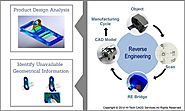
The concept of reverse engineering is to discover the technological principles of the devices through analysis and of its structure, function and operation. The primary process of reverse engineering involves disassembling devices to extract details that were missed, remained incomplete or replace unavailable information.
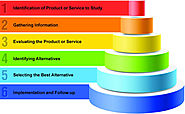
Value engineering is essentially a process of implementing optimal product development strategy to produce products that offer better value to the customers at simultaneously reduced costs. It requires redesigning the entire development process right from concept development to final product dispatch, by figuring out the possible areas in the process requiring improvement.

Product development today is quite challenging as there is a continuously pressing need from the market to manufacture products faster, requiring the reduction of development cycles. It has become mandatory for manufacturing firms to seek out innovation in their manufacturing strategy right from conceptualization to final production.

Product development time in any manufacturing firm is directly linked to the overall performance and profits of the organization. Moreover, the modern consumer market is posing a challenge upon manufacturers to develop better products and that to at a faster rate without compromising with the cost.

Finite element analysis has made lives of mechanical engineers and design engineers a lot easier. Through simulation techniques, evaluating product designs have become faster, allowing manufacturers to reach their product development goals on time and place their products in the market effectively.

Today Architectural modeling and rendering, has become extremely commonplace in the industry. While we all know that buildings are modeled, rendered and animated, this is not the only niche where 3D modeling and rendering is applied. Product manufacturers can effectively use 3D modeling and rendering to build a product library and drive sales. How? Let’s understand.

The idea behind Model Based Definition is to incorporate manufacturing and inspection information in 3D models as compared to developing separate 2D drawings from 3D models for manufacturing requirements. The use of 2D drafting is declining significantly as 3D modeling is increasingly being utilized across every product development stage. It is thus pretty much obvious then to imagine 3D models being also utilized for manufacturing purpose. The model based definition is an approach towards this direction.
